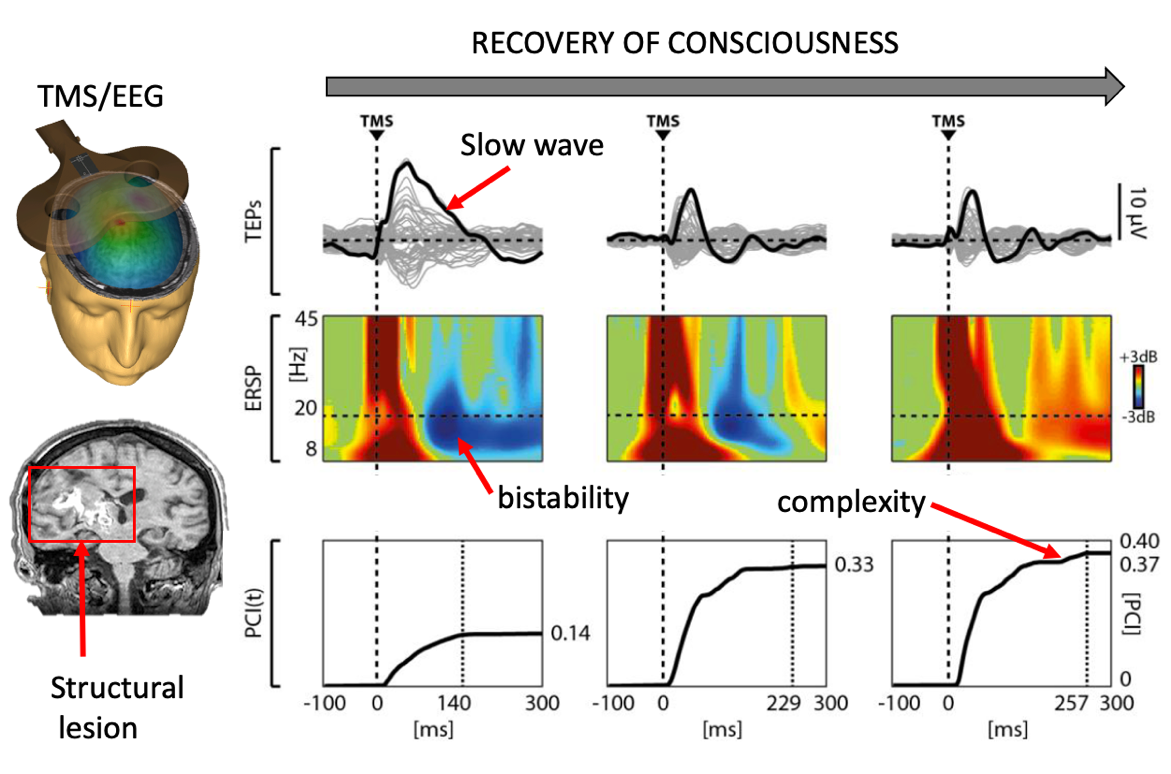Studying the Effects of the Local Intrusion of Sleep-Like Dynamics on the Level and Content of Consciousness During Wakefulness
Overview:
The primary aim of this project is to identify the neurophysiological determinants of brain complexity and how they can be modulated to design novel approaches aimed at restoring and enhancing consciousness.
Abstract:
The team has progressed with extensive experiments demonstrating a key role of the intrusion of sleep-like dynamics into the awake brain as a key determinant of loss of complexity.
The team has found that loss of brain complexity in vegetative state patients, who are awake (open-eyed) but unconscious, is due to a massive intrusion of bistability across residual cortical circuits. In these patients, bistability, a phenomenon whereby neurons enter a silent period (OFF-period) upon receiving an input, prevents the ability of cortical circuits to sustain reciprocal causal interactions and complex patterns. Since bistability is potentially reversible and given that its cellular mechanisms are well known, this finding opens new avenues to promote recovery of consciousness after severe brain injury.
Further, the team has shown that bistability can intrude also locally, in the perilesional area of stroke patients, and that it can percolate to areas connected to the perilesional area, leading to specific cognitive and motor deficits. These findings are relevant as they provide a neurophysiological substrate for the classic concept of diaschisis, the clinical concept that lesions produce clinical effects that are due to distant alterations that go well beyond the area of structural damage.
Based on these findings and others, we now plan to focus on how the local intrusion of sleep-like dynamics can affect different dimensions of conscious content in both patients and healthy subjects. This is expected to provide a neurophysiologically plausible ground for assessing and modulating conscious content.

Broader Impact:
Extensive experiments and simulations across scales and models suggest that the intrusion and percolation of sleep-like dynamics into the awake brain is shaping the level and the content of consciousness in healthy and pathological conditions. This exploration offers a key mechanistic insight to develop stimulation strategies to restore consciousness and modulate its content.